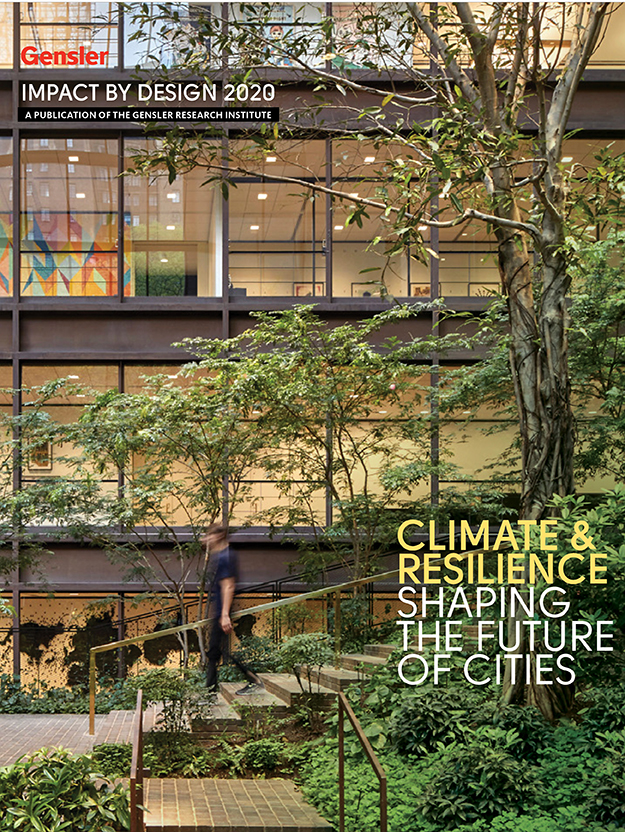Climate & Resilience Shaping the Future of Cities

ADDRESSING THE CLIMATE CRISIS IS MORE IMPORTANT THAN EVER. TOGETHER WE CAN CREATE AN ERA OF GLOBAL WELLNESS. We release our annual Impact By Design publication at a time when the world is facing an unprecedented public health crisis—and showing great courage in responding to it. The past couple of months have revealed how closely connected we all are and how quickly millions of people can mobilize when needed. Imagine if this kind of agility were applied to the climate crisis. In fact, an unintended consequence of the work-from-home imperative has been a measurable improvement in air quality in many cities—in just six weeks. This renews our understanding that we can make a difference through our choices and decisions— once we resolve to make it happen. But like the health crisis, in the absence of fundamental longstanding changes, the climate crisis will imperil our future well-being if we resume business as usual without addressing the essential changes that need to be made. To spur longstanding change, last fall we announced the Gensler Cities Climate Challenge (GC3). Our plan is to eliminate all carbon emissions associated with our work within a decade. As the world’s largest design firm, we have a unique obligation and opportunity to improve the impact of the built environment—but also to lead the industry. We challenge all our colleagues and clients to join us in the path toward carbon neutrality. The built environment can help achieve a new era of global wellness. Even with the current pandemic, we can see the interconnectedness of decisions we need to make for global health and safety. Climate change continues to be an urgent challenge, affecting everything: quality of life, biodiversity, national security, the economy, and especially public health. Design can help to tackle these challenges—and enrich the human experience, promote well-being, and ensure safety.





